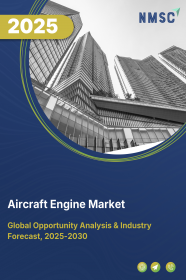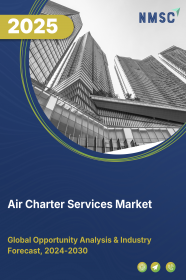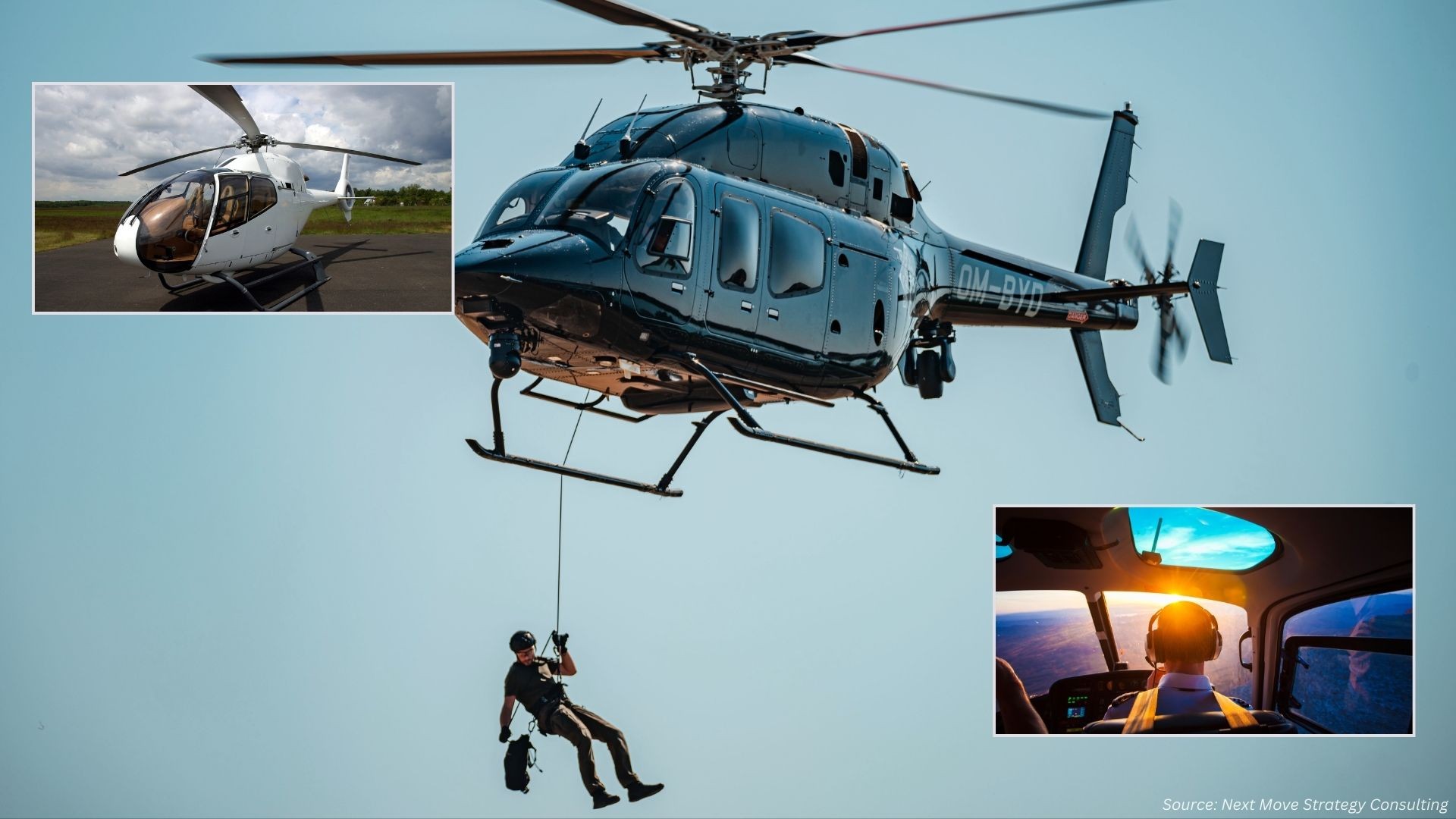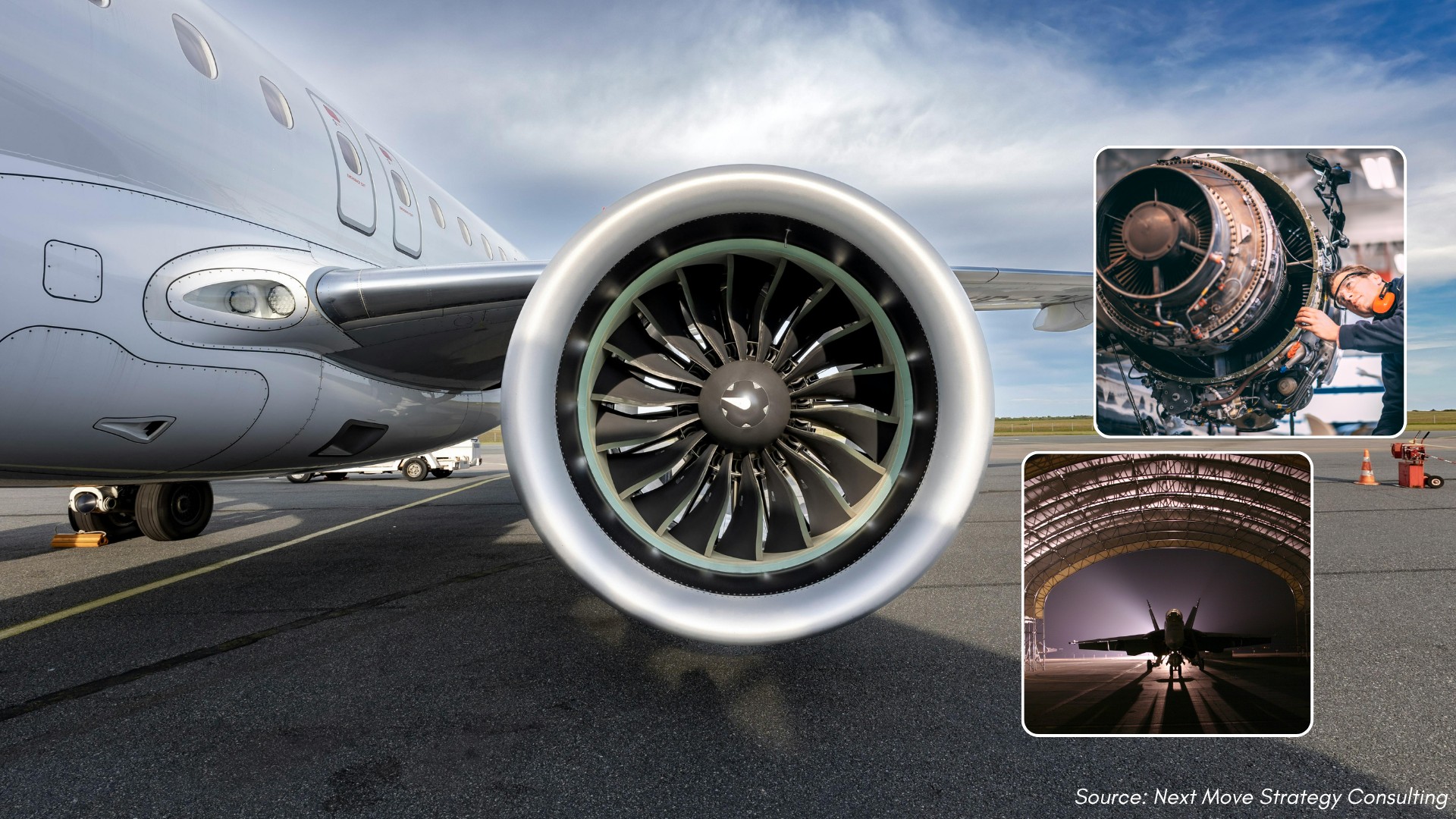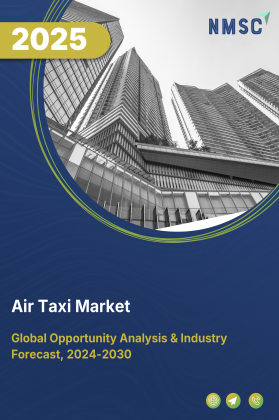
Air Taxi Market by Aircraft Type, (Multicopter EVTOL, Lift-plus-Cruise EVTOL, Tiltrotor / Tiltwing EVTOL, STOL Fixed-Wing (eSTOL), Conventional Rotorcraft (Helicopters), Other / Experimental), by Propulsion Type, (Electric, Hybrid, Turboshaft, Others), by Infrastructure Modality, (Dedicated Vertiports, Airport Integration, Distributed Pads, Modular / Portable Vertipads), by Autonomy Level, (Piloted, Semi-Autonomous, Fully Autonomous) – Global Opportunity Analysis and Forecast 2025–2030
Industry Overview
The global Air Taxi Market size estimated at USD 3.26 billion in 2024 and is expected to be valued at USD 4.0 billion by the end of 2025. The industry is projected to grow, reaching USD 11.12 billion by 2030, with a CAGR of 22.6% between 2025 and 2030.
Rising urbanization and expansion of travel and tourism sector are acting as the propulsion factors in the air taxi market growth. However, strict regulations regarding safety issues hinders the growth of the market. Moreover, leading players such as Joby aviation, Wisk Aero, Volocopter, and others are taking various initiatives such as launches and partnerships to enhance their market presence.
On the contrary, integration of artificial intelligence in the flying taxis is set to create growth opportunities for the market in the coming years. With such innovations the market is poised for transformative changes.
Accelerating Urbanization Strongly Drives Market Growth
Massive urbanization and the expansion of megacities created more traffic congestion, and this led to a call for faster, more efficient modes of transportation. Air taxis provide a brand-new solution to urban mobility in the form of unmanned aerial vehicles that usefully reduce the amount of time spent travelling between dense areas, essentially lessening the strain on normal transport systems.
According to the World Bank’s Urban Population indicator, approximately 57.7% of the global population lived in urban areas in 2024, up from 57.25% in 2023. By 2025, this share is estimated to reach 58%, reflecting the continuing trend of people relocating to cities worldwide. With more and more people moving to the cities, the demand for new envisages of transport including flying taxis increases to mitigate congestion and improve mobility in these hotspots for rapid urbanization.
Advancements in Electric Vertical Take-Off and Landing Technology Propels Market Demand
Technological innovations including electric vertical take-off and landing (eVTOL) technology, battery efficiency and electric propulsion, are making air taxis more viable and environmentally friendly, driving the air taxi market demand.
For example, Vertical Aerospace in July 2024 launched its scaled-up VX4 prototype, depicting the development of eVTOL technologies. This attempt among developers to transform an urban air transport future, represents a significant step in the rollout of electric air mobility globally.
Expansion of Travel and Tourism Industry Drives Market Expansion
The demand for fast travel is revolutionizing travel and tourism sector and is adding up to the growth of the market. With consumers desiring a quicker, more efficient mode of transportation that beats traffic and travel time, air taxis are also presented as a viable solution.
According to the World Travel & Tourism Council’s 2025 report, the Travel & Tourism sector is on track to contribute approximately USD 11.7 trillion to the global economy in 2025, representing about 10.3% of global GDP, while supporting around 371 million jobs worldwide, an increase of 14 million jobs year on year. This demand for on-demand, vertical mobility facilitates market expansion with instant access to key areas.
Regulatory and Safety Challenges Pose Significant Barriers to Market Expansion
The widespread adoption of air taxis faces considerable hurdles due to complex regulatory and safety requirements. Unlike conventional aviation, urban air mobility involves low-altitude flight paths within densely populated areas, demanding entirely new frameworks for airspace integration, traffic coordination, and operational safety.
Aviation authorities such as the FAA and EASA are still in the process of drafting comprehensive guidelines for certifying eVTOL vehicles, infrastructure, and pilots. These regulatory gaps introduce uncertainty for manufacturers and investors, often delaying prototype testing, commercial approvals, and large-scale deployment.
Moreover, ensuring public safety and gaining community trust necessitates rigorous simulation trials, real-world flight demonstrations, and alignment with international airworthiness standards, all of which require extensive time, financial investment, and inter-agency collaboration.
Incorporation of Artificial Intelligence Creates Future Opportunities
The integration of AI is poised to play a transformative role in the evolution of the market, opening up substantial opportunities for growth and innovation. AI technologies enable a range of critical functionalities, including autonomous navigation, dynamic route optimization, airspace coordination, and predictive maintenance, all of which enhance the operational efficiency, safety, and reliability of flying taxis.
For instance, machine learning algorithms can process vast datasets in real time to identify optimal flight paths, avoid mid-air collisions, adapt to changing weather conditions, and manage fuel or battery usage more effectively. Predictive maintenance systems powered by AI can also anticipate technical faults before they occur, reducing downtime and improving fleet availability. As urban air mobility scales up, AI will become essential in managing complex urban air traffic environments and ensuring seamless passenger experiences.
Market Segmentation and Scope of the Study
The air taxi market report is divided on the basis of aircraft type, propulsion type, technology, service type, range, regulatory stage, application, end user, and region. On the basis of aircraft type, the market is segmented into multicopter, tiltrotor aircraft, tiltwing aircraft, side-by-side aircraft, fixed-wing electric aircraft, conventional rotorcraft, and others. By propulsion type, the market is classified into electric, hybrid, turboshaft, and others. Based on technology, it is divided into fully autonomous, semi-autonomous, and manual. On the basis of service type, the market is segmented into air taxi platform services, air taxi MRO services, and air taxi pilot training services. By range, it is segmented into intercity and intracity. Based on regulatory stage, the market is segmented into pilot projects, certified commercial, and pre-commercial. On the basis of application, the market is categorized into passenger transportation, airport shuttles, medical evacuation, search and rescue operations, cargo transportation, leisure & tourism, and others. Based on end user, the market is segmented into individual consumers, corporate/business clients, government & public services, and others. The regional breakdown includes North America, ERoW).
Geographical Analysis
North America dominates the air taxi market share, driven primarily by advanced technological integration eVTOL development. With cutting-edge development efforts, the region benefits from pioneering advancements that enhance the efficiency, safety, and performance of flying taxi solutions. This leadership is underpinned by a well-developed infrastructure ecosystem and early regulatory roadmaps from the Federal Aviation Administration, such as its Advanced Air Mobility (AAM) Implementation Plan and active collaboration with NASA’s AAM campaigns.
Also, in December 2024, UrbanLink aimed to become the first independent airline in the US to provide all-electric AAM solutions. It is pioneering zero-emission travel with a fleet featuring eVTOLs, electric aircraft, and electric watercraft. As the first of its kind in the U.S., this innovative transport operator is set to revolutionize independent airline operations and lead the way in emission-free travel.
Across Europe, adoption is progressing steadily but more cautiously, guided by multi-city demonstration projects under the European Innovation Partnership on Smart Cities’ UAM initiative. For instance, Germany’s Federal Ministry for Digital and Transport (BMDV) has supported several demonstration projects under its Innovative Air Mobility funding program, committing approximately USD 16.4 million to real-world urban air mobility trials.
One notable initiative, the AMI-FlyingIN2Air project in Ingolstadt/Manching, was granted around USD 2.29 million to explore key aspects such as vertiport infrastructure, interoperable digital platforms, and integration with other transport modes through the use of digital twin simulations. These nationally and regionally coordinated pilots illustrate Europe’s broader approach, prioritizing standardized safety protocols and fostering public trust before advancing toward full-scale commercialization of air taxi services.
On the other-hand, Asia-Pacific is the fastest rising market owing to its significant expansion in advanced mobility solutions and infrastructure. Regulators have moved in concert where in July 2025, with twenty civil aviation authorities released joint guidance on safety, airspace access and vertiport design, laying vital groundwork for commercial rollouts. Also, in June 2024, a South Korean aviation start-up introduced a helicopter taxi service, providing a route that takes travelers from Seoul’s Gangnam district to the airport, with a travel time of less than 20 minutes instead of almost two hours. By transforming air mobility, this introduction showcases the surge of cutting-edge transportation infrastructures that seeks to relieve congestion in urban areas while providing swift, effective travel alternatives for cities studded with traffic-clogged streets.
Beyond these core markets, the RoW is awakening to air taxis’ potential through targeted pilot programs and niche applications. The UAE is positioning Dubai as a global hub, with Joby’s first test flight in June 2025 and a six-year exclusive operating deal with the Dubai Roads & Transport Authority covering four vertiport sites. Meanwhile, Latin America and parts of Africa are evaluating eVTOL platforms for medical evacuation and last-mile cargo in regions where ground infrastructure is sparse. Though regulatory frameworks are still under development, these pilots demonstrate how air taxis can leapfrog traditional transport constraints in emerging economies.
Key Strategies Adopted by Major Players
Various players in the air taxi industry includes, Joby Aviation, Inc., Archer Aviation, Inc., Vertical Aerospace Ltd., EHang Holdings Limited, Eve Air Mobility, Wisk Aero, Inc., Beta Technologies, Inc., Airbus SE, Bell Textron Inc., Supernal LLC (Hyundai Motor Group), AutoFlight Technology Co., Ltd., Jaunt Air Mobility, Inc., Urban Aeronautics Ltd., Piasecki Aircraft Corporation, SkyDrive Inc. and others. These market players are opting strategies including product launches and partnerships to maintain their dominance in the market.
-
In August 2025, Joby partnered with L3Harris to develop a gas-turbine hybrid VTOL for defense applications, building on its June 2024 acquisition of Xwing’s autonomy division to extend range and autonomy. Again, on July 15, 2025, Joby announced it would double manufacturing capacity at its Marina, CA, and Dayton, OH, facilities adding 435,500 sq. ft. of assembly and test space and leveraging Toyota’s production playbook for scale.
-
In June 2025, Archer signed a deal with Indonesia’s PT IKN to deploy its piloted Midnight eVTOLs, potentially ordering up to 50 aircraft valued at USD 250 million under the Launch Edition program. The aircraft will shuttle officials and workers between key districts of Nusantara, Indonesia’s purpose-built capital, cutting travel times by over 70 percent and showcasing sustainable urban mobility
-
On June 2025, EHang expanded its strategic partnership with Gotion High-Tech, leveraging 46-series cylindrical cells to enhance range, thrust, and safety of its flagship EH216 series. The collaboration also integrates advanced battery management systems jointly developed by both firms, enhancing in-flight safety through real-time health monitoring and fault prediction.
-
On April 2025, SkyDrive showcased its SD-05 eVTOL in a public demo flight at Expo 2025 Osaka’s Media Day, marking its first large-scale demonstration. The demo was part of SkyDrive’s broader initiative to commercialize air taxi services in Japan by 2026, aiming to support short-distance passenger travel during and after the Expo.
Key Benefits
-
The report provides quantitative analysis and estimations of the market from 2025 to 2030, that assists in identifying the prevailing industry opportunities.
-
The study comprises a deep dive analysis of the current and future air taxi market trends to depict prevalent investment pockets in the sector.
-
Information related to key drivers, restraints, and opportunities and their impact on the market is provided in the report.
-
Competitive analysis of the players, along with their market share is provided in the report.
-
SWOT analysis and Porters Five Forces model is elaborated in the study.
-
Value chain analysis in the market study provides a clear picture of roles of stakeholders.
Air Taxi Market Key Segments
By Aircraft Type
-
Multicopter EVTOL
-
Lift-plus-Cruise EVTOL
-
Tiltrotor / Tiltwing EVTOL
-
STOL Fixed-Wing (eSTOL)
-
Conventional Rotorcraft (Helicopters)
-
Other / Experimental
By Propulsion Type
-
Electric
-
Hybrid
-
Turboshaft
-
Others
By Infrastructure Modality
-
Dedicated Vertiports
-
Airport Integration
-
Distributed Pads
-
Modular / Portable Vertipads
By Autonomy Level
-
Piloted
-
Semi-Autonomous
-
Fully Autonomous
By Range
-
Urban Air Mobility (<10 Km)
-
City And Airport Shuttles (10–50 Km)
-
Regional Connectivity (50–200 Km)
-
Extended Regional / Intercity (>200 Km)
By End User
-
Commercial Passenger Operators
-
Commercial Cargo Operators
-
Logistics / E-commerce Direct Fleets
-
Corporate / Private Fleets
-
Government and Public Services
-
Tourism and Hospitality Operators
-
Lessors and Finance Companies
-
Vertiport and Infrastructure Operators
-
Training and MRO Service Providers
-
Others
By Region
-
North America
-
The U.S.
-
Canada
-
Mexico
-
-
Europe
-
The UK
-
Germany
-
France
-
Italy
-
Spain
-
Denmark
-
Netherlands
-
Finland
-
Sweden
-
Norway
-
Russia
-
Rest of Europe
-
-
Asia-Pacific
-
China
-
Japan
-
India
-
South Korea
-
Australia
-
Indonesia
-
Singapore
-
Taiwan
-
Thailand
-
Rest of Asia-Pacific
-
-
RoW
-
Latin America
-
Middle East
-
Africa
-
Key Players
-
Joby Aviation, Inc.
-
Archer Aviation, Inc.
-
Vertical Aerospace Ltd.
-
EHang Holdings Limited
-
Eve Air Mobility
-
Wisk Aero, Inc.
-
Beta Technologies, Inc.
-
Airbus SE
-
Bell Textron Inc.
-
Supernal LLC (Hyundai Motor Group)
-
AutoFlight Technology Co., Ltd.
-
Jaunt Air Mobility, Inc.
-
Urban Aeronautics Ltd.
-
Piasecki Aircraft Corporation
-
SkyDrive Inc.
Report Scope and Segmentation:
|
Parameters |
Details |
|
Market Size in 2025 |
USD 4.0 Billion |
|
Revenue Forecast in 2030 |
USD 11.12 Billion |
|
Growth Rate |
CAGR of 22.6% from 2025 to 2030 |
|
Analysis Period |
2024–2030 |
|
Base Year Considered |
2024 |
|
Forecast Period |
2025–2030 |
|
Market Size Estimation |
Billion (USD) |
|
Growth Factors |
|
|
Countries Covered |
28 |
|
Companies Profiled |
15 |
|
Market Share |
Available for 15 companies |
|
Customization Scope |
Free customization (equivalent to up to 80 working hours of analysts) after purchase. Addition or alteration to country, regional, and segment scope. |
|
Pricing and Purchase Options |
Avail customized purchase options to meet your exact research needs. |

















 Speak to Our Analyst
Speak to Our Analyst



